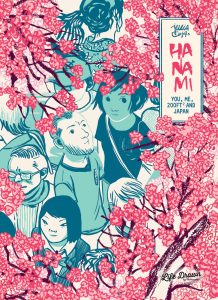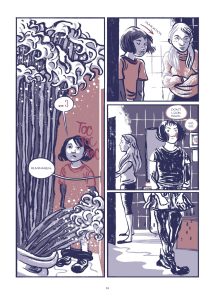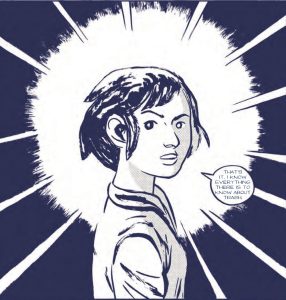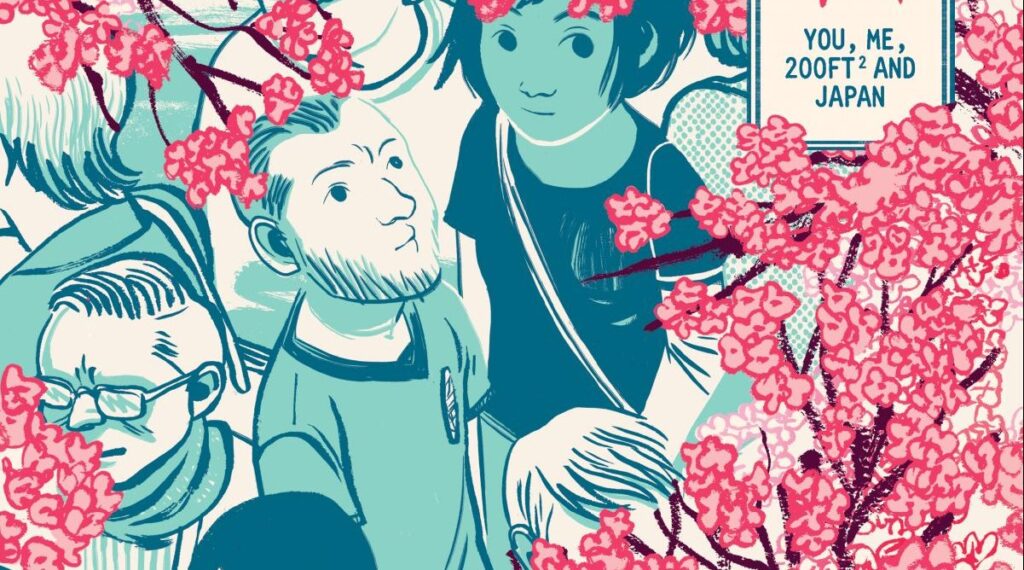
 Hanami – 200 square feet of you, me and Japan
Hanami – 200 square feet of you, me and Japan
Writers and Artists: Julia Seijas
Translator: Holly Atchison
Publisher: humanoid
It’s easy to get things wrong with autobiographical slice-of-life comics. Making your story too specific and personal may appear self-indulgent. Focus too much on the mundane or unremarkable without tapping into the drama or humor, and you can end up mired in boredom. Hanami, Author: Spanish cartoonist Julia Seijas And by humanoidAvoid both pitfalls and get a comfortable, fun, and optimistic look at travel, finding a home away from home, and working through the growing pains of being cooped up in a small space with a partner.
exist Hanami, Julia Cejas talks about six months she spent with her husband Marc in Tokyo. With plenty of cash from their husband’s civil engineering job and severance pay, the couple decided to fulfill a lifelong dream of living in Japan, home to their various inspirations in games, comics and music. from beginning to end Hanami, Cejas recounts these six months on a tight budget with honesty, humor and nostalgia.

Julia Seijas’s work in this comic is extremely enjoyable as it celebrates the joys of discovery and exploration without seeming precious or overly romantic. Culture clashes are fodder for self-deprecating humor, and small victories surrounding the minutiae of daily life in a foreign country (such as taking out the trash) are as worthy of celebration as the dramatic climax of a comic book story. The artist’s comedic timing and ability to build a page are outstanding. She uses small panels to set up punchlines and half-page punchlines, allowing us as readers to build anticipation through a quick set-up and then become immersed in the huge dramatic moment. She constructs these ridiculously inconsequential moments the same way superhero artists construct their big fight scenes. The visuals are filled with homages and imitations of Seijas’ influences, including Junji Ito and Hayao Miyazaki. The book avoids romanticizing cultural differences and instead focuses on the couple’s personal foibles and joys.
Hanami It’s not broken into chapters or even structured with a lot of narrative. Instead, it contains various vignettes from Julia and Mark’s brief stay in Tokyo. None of the scenes are particularly long, and most are played one after the other without much fanfare. It makes every moment read like a stand-alone comic strip. As she jumps from one day to the next, you can almost feel the author trying to capture memories that blur into an indistinguishable mass. The fleeting nature of time and memory becomes tangible.

Cejas’ art is gorgeous. Her soft lines and brushstrokes make the characters and the city of Tokyo inviting and approachable. A limited palette of colors—mainly black, white, and gray tones, with accents of red—reminiscent of the comics that inspired her. The presence of red helps small but important details pop off the page, and by limiting details to the colors of the Japanese flag, the artist embraces the country that briefly welcomed her. Just as importantly, varying shades of red (often closer to pink) are reminiscent of Japan’s iconic cherry blossoms. The title of the book comes from the Japanese tradition of enjoying the short blooming period of cherry blossoms. The hanami craze, like the leaf-viewing craze sweeping the New England states, is the subject of only one episode in this book. But Hanami’s spirit pervades the entire project. Hanami is a celebration of the fleeting beauty of the flower season. on her Hanami, Julia Cejas revels in the fleeting beauty of her experiences in Tokyo, inviting readers to join her in a joy of discovery and inspiration. It’s a moving reflection on cherishing life’s fleeting, banal moments and imbuing each moment with beauty and meaning.
Read more great reviews from The Beat!


